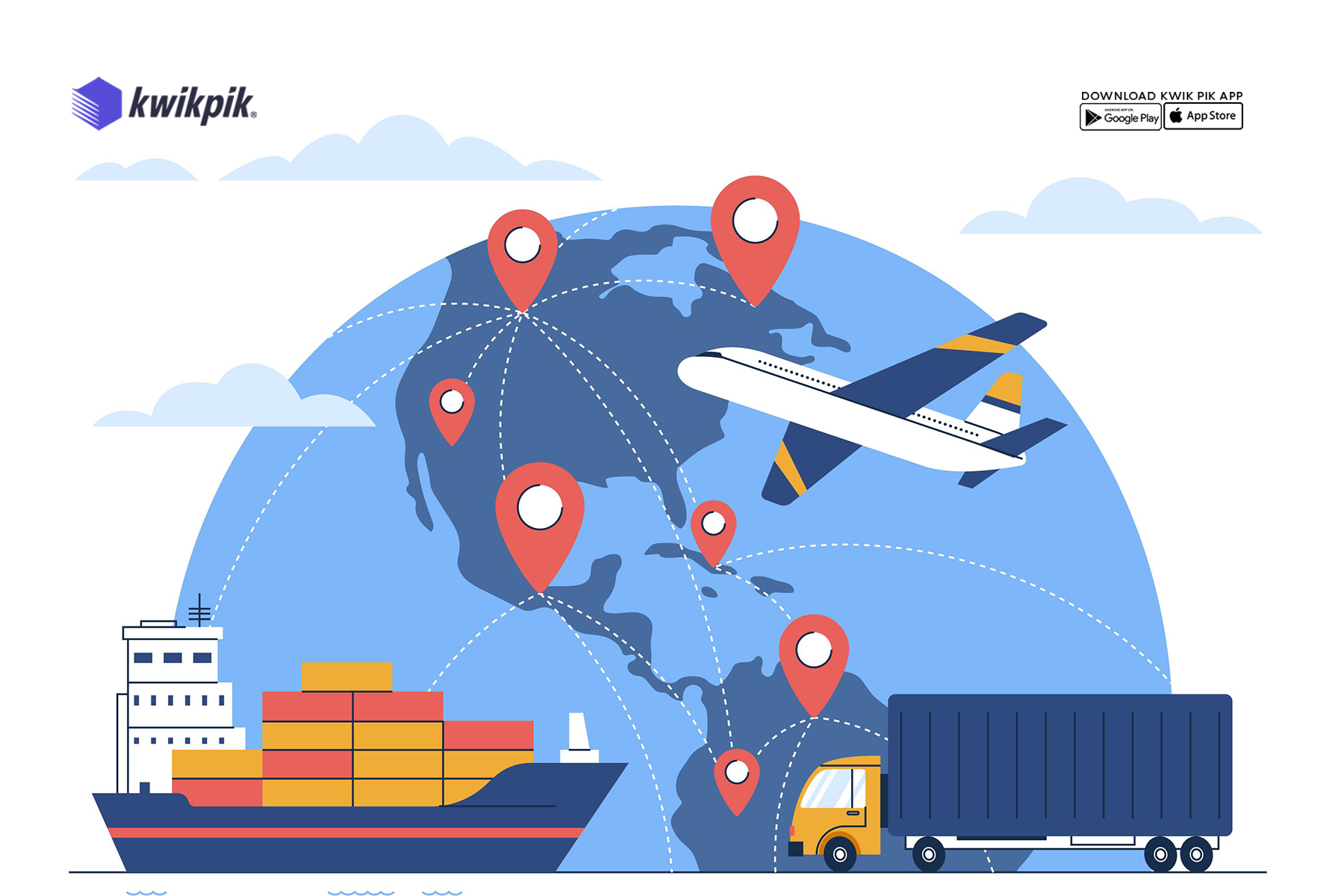How to do International Deliveries From Nigeria
 Onyeka Ekwemozor
Onyeka Ekwemozor
Going global was an option for large enterprises only before ecommerce platforms came Today, a chime from Shopify or Amazon could indicate another customer buying your products from anywhere in the world.
While it’s exciting, uncertainty can creep in if you haven’t shipped internationally. One factor ultimately determines your success: reliable logistics.
This blog will share a step-by-step guide on how to do international deliveries.
What Are International Deliveries?
International deliveries involve transporting finished goods through an international supply chain. It involves cross-border distribution to consumers or business partners.
7 Vital Steps For A Successful International Delivery
1. Research as much as possible
Planning is the first step for delivering internationally from Nigeria. Research as much as possible to understand the shipping regulations within Nigeria and in the recipient’s country.
Compare and select a reliable international shipping carrier like TopShip, DHL, FedEx, and UPS. Don’t hesitate to speak with customer support representatives to understand better.
Also decide on your mode of transportation e.g. freight shipping, air, sea, or ground shipping. To make the right decision, you have to consider the time, cost, and reliability of each and determine what works for your margins.
For urgent deliveries, use express shipping services like air shipping, which is faster but more expensive. Even the most difficult delivery deadline can be met with express delivery.
Proper research will give you confidence in your shipping decisions reducing anxiety for you and your customer.
2. Get your documentation
Complete all required customs forms accurately. This typically includes a commercial invoice, packing list, and any other specific documents required by the destination country.
Provide detailed descriptions of the items being shipped, including the value and purpose (e.g., gift, sale). You can offer insurance to cover potential damage during transit.
3. Package your product
Shipping globally requires simple but reliable packaging. Ensure you use solid materials to protect the item during transit and consider double-boxing fragile items. You can find packaging options here.
To avoid mixing up your package, you have to label it. The label contains crucial information that helps the carrier (e.g., TopShip) to deliver the package to the right place. It can include the recipient's address, your return address, and any necessary handling instructions (e.g., "Fragile" or "Perishable").
4. Work with a broker for customs clearance
Delivering somewhere new comes with its challenges. All global orders need to be cleared through the customs of the country they are entering and this involves paperwork.
Good documentation and labeling your package right can reduce your wait time. However, for complex orders, working with an experienced customs broker is recommended.
A customs broker is a company that is contracted to ensure that the customs declaration is correct. They also ensure that duties and taxes are paid accurately, and payments are received quickly and efficiently so that goods can cross borders without interruption.
Here, you’ll be required to pay import or export duties. These are taxes placed on imports by customs authorities in the destination country of the shipment. The duties vary by country and are dictated by the value of the goods being imported.
Some e-commerce brands opt for DDP shipping (delivery duty paid), in which they take responsibility for all fees of shipping goods until they reach their destination. This way, your orders won’t be sent back when a consumer refuses to pay additional duties when it enter their destination country.
5. Time to ship
Schedule the shipment with your chosen carrier. Provide all necessary information and pay for the shipping service. Obtain a tracking number for the shipment to monitor its progress. You can share the tracking number with the recipient of the package as well. This reduces friction between you and your customer.
6. After a Successful Delivery
Notify the recipient of the shipment status and check in with the recipient to ensure the package was received in good condition. Address any issues promptly.
Lastly, gather feedback from the recipient to improve future international shipping processes.
Kwikpik As A Reliable Delivery Partner
As a Web3 on-demand delivery marketplace application for retail consumers and vendors in underserved regions of Africa and the Middle East, our peer-to-peer delivery network is fast, trackable, and efficient.
As we expand across Africa, Kwikpik will provide a reliable delivery experience for e-commerce businesses that want to deliver internationally.
With us, you can dispatch and receive packages, track deliveries in transit, secure your deliveries with our insurance policy, and protect your package against mistakes using our security codes.
We also provide warehousing solutions, so your business can reach more customers in underserved areas and go beyond your local city.
To leverage our API, send a direct message through our social platforms. For partnerships, speak with our support: support@kwikpik.io, to become a Kwikpik partner.
Download our app| Become a rider| Become a business partner| Visit our social channels
Subscribe to my newsletter
Read articles from Onyeka Ekwemozor directly inside your inbox. Subscribe to the newsletter, and don't miss out.
Written by

Onyeka Ekwemozor
Onyeka Ekwemozor
Onyeka is a multiple Google-ranked content writer.